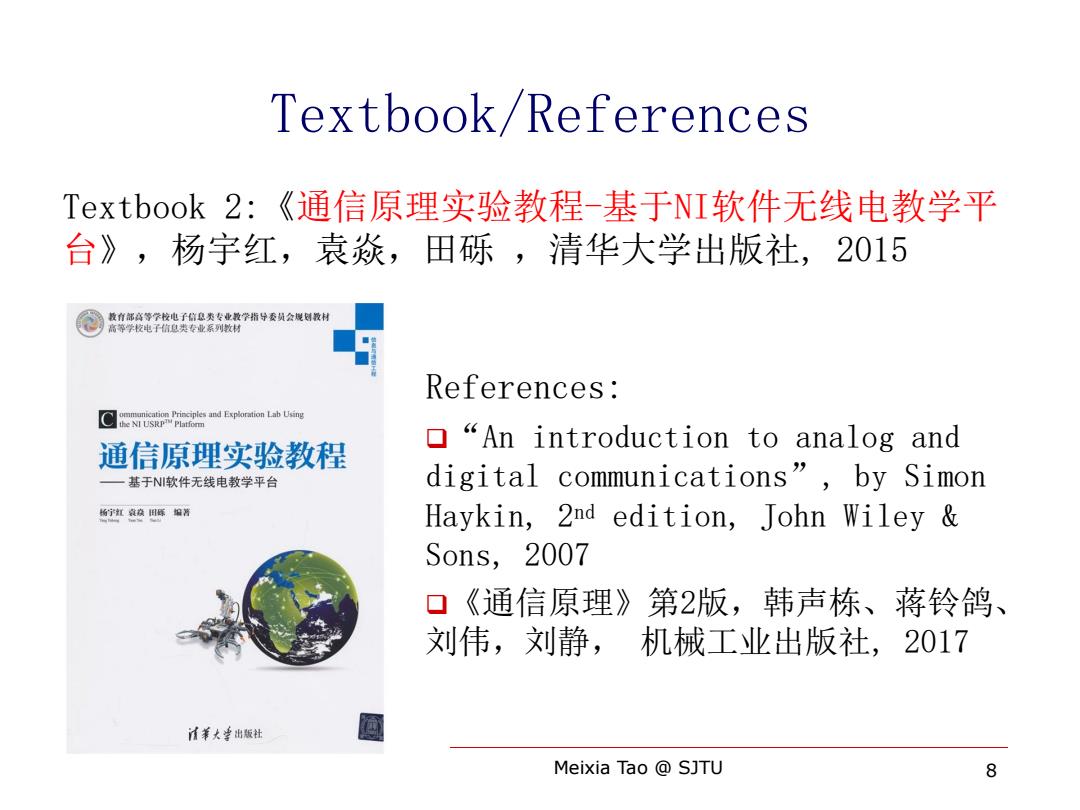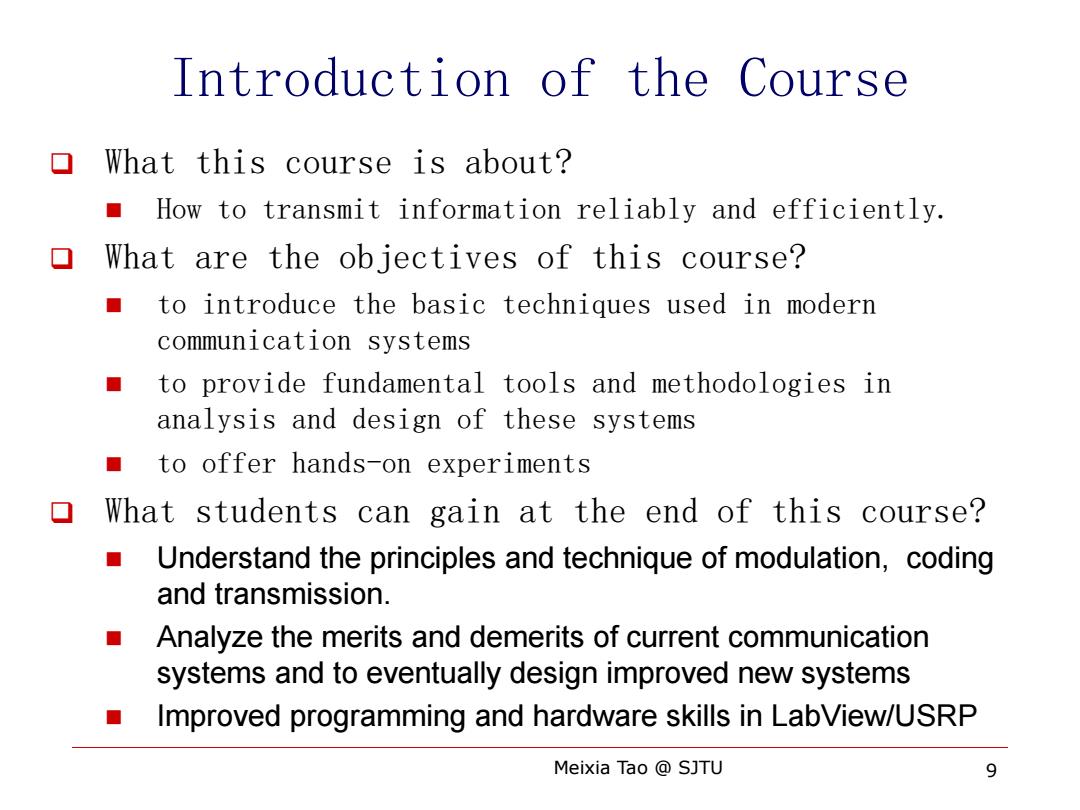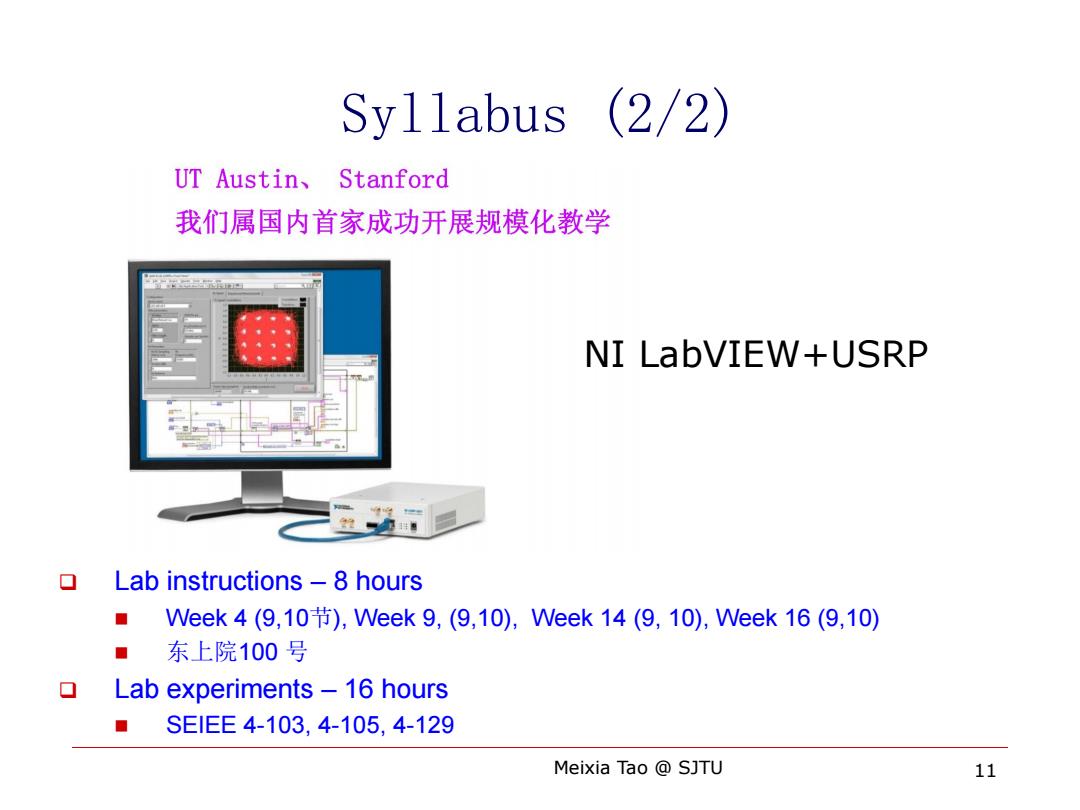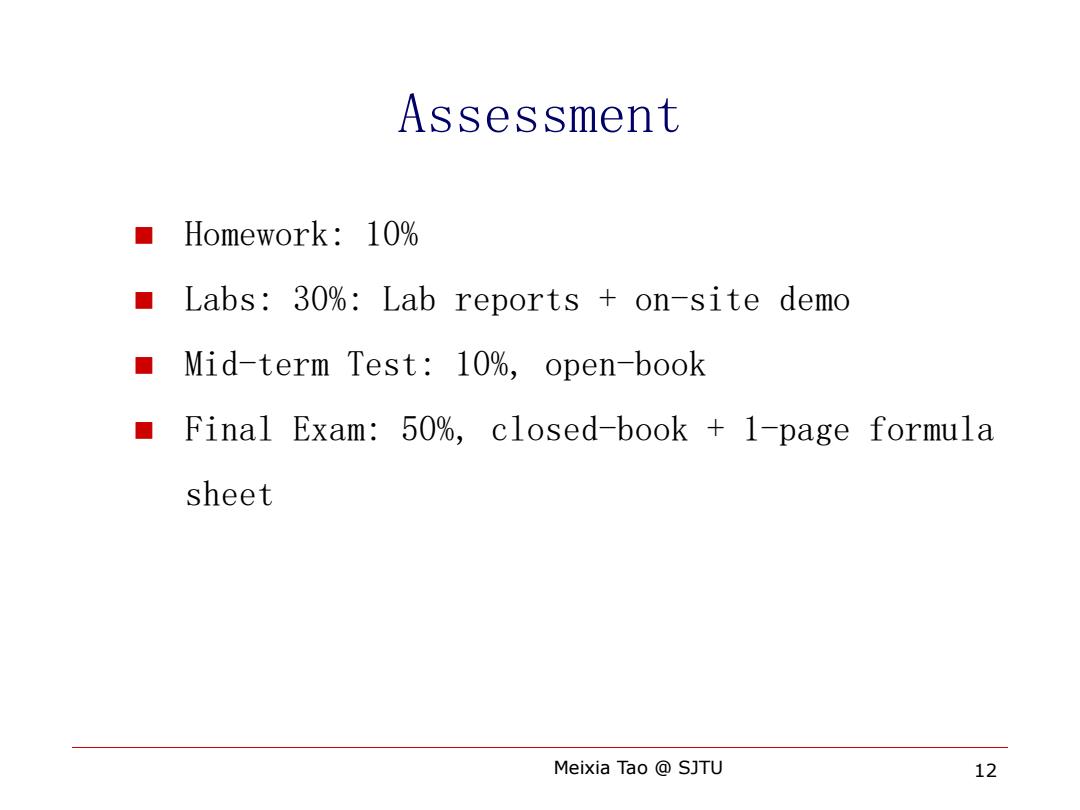
Textbook/References Textbook2:《通信原理实验教程-基于NI软件无线电教学平 台》,杨宇红,袁焱,田砾,清华大学出版社,2015 教有部高等学校电子信息类专业教学指导委员会规结教材 高等学校电子信息类专业系列数材 References: NT USUP盖Explorio ing 通信原理实验教程 ▣“An introduction to analog and 一基于N软件无线电教学平台 digital communications",by Simon 场宁江效孩国细菁 Haykin,2nd edition,John Wiley Sons,2007 口《通信原理》第2版,韩声栋、蒋铃鸽、 刘伟,刘静,机械工业出版社, 2017 清苇大堂出版社 Meixia Tao SJTU 8
Meixia Tao @ SJTU Textbook/References Textbook 2:《通信原理实验教程-基于NI软件无线电教学平 台》,杨宇红,袁焱,田砾 ,清华大学出版社, 2015 8 References: q“An introduction to analog and digital communications” , by Simon Haykin, 2 nd edition, John Wiley & Sons, 2007 q《通信原理》第2版,韩声栋、蒋铃鸽、 刘伟,刘静, 机械工业出版社, 2017

Introduction of the Course What this course is about? How to transmit information reliably and efficiently. What are the objectives of this course? to introduce the basic techniques used in modern communication systems ■ to provide fundamental tools and methodologies in analysis and design of these systems to offer hands-on experiments What students can gain at the end of this course? Understand the principles and technique of modulation,coding and transmission. ■ Analyze the merits and demerits of current communication systems and to eventually design improved new systems Improved programming and hardware skills in LabView/USRP Meixia Tao SJTU 9
Meixia Tao @ SJTU Introduction of the Course q What this course is about? n How to transmit information reliably and efficiently. q What are the objectives of this course? n to introduce the basic techniques used in modern communication systems n to provide fundamental tools and methodologies in analysis and design of these systems n to offer hands-on experiments q What students can gain at the end of this course? n Understand the principles and technique of modulation, coding and transmission. n Analyze the merits and demerits of current communication systems and to eventually design improved new systems n Improved programming and hardware skills in LabView/USRP 9

Syllabus (1/2) 口 Ch01:Introduction(2 hours) 口 Ch02:Signal,random process,and spectra (8 hours) Ch03:Analog modulation (8 hours) Ch04:Analog to digital conversion(2 hours) Ch05:Digital transmission through bandlimited channels(6 hours) Ch06:Signal space presentation(2 hours) Ch07:Optimal receivers(6 hours) Ch08:Digital modulation techniques(8 hours) Ch09:Information theory (4 hours) Ch10:Channel Coding(6 hours) Ch11:Advanced topics(2 hours) Meixia Tao SJTU 10
Meixia Tao @ SJTU Syllabus (1/2) q Ch01: Introduction (2 hours) q Ch02: Signal, random process, and spectra (8 hours) q Ch03: Analog modulation (8 hours) q Ch04: Analog to digital conversion (2 hours) q Ch05: Digital transmission through bandlimited channels (6 hours) q Ch06: Signal space presentation (2 hours) q Ch07: Optimal receivers (6 hours) q Ch08: Digital modulation techniques (8 hours) q Ch09: Information theory (4 hours) q Ch10: Channel Coding (6 hours) q Ch11: Advanced topics ( 2 hours) 10

Syllabus (2/2) UT Austin、Stanford 我们属国内首家成功开展规模化教学 NI LabVIEW+USRP ▣ Lab instructions-8 hours ■Week4(9,10节),Week9,(9,10),Week14(9,10),Week16(9,10) ■东上院100号 口 Lab experiments-16 hours ■ SEIEE4-103,4-105,4-129 Meixia Tao SJTU 11
Meixia Tao @ SJTU Syllabus (2/2) q Lab instructions – 8 hours n Week 4 (9,10节), Week 9, (9,10), Week 14 (9, 10), Week 16 (9,10) n 东上院100 号 q Lab experiments – 16 hours n SEIEE 4-103, 4-105, 4-129 11 NI LabVIEW+USRP

Assessment ■Homework:10% Labs:30%:Lab reports on-site demo Mid-term Test:10%,open-book Final Exam:50%,closed-book 1-page formula sheet Meixia Tao SJTU 12
Meixia Tao @ SJTU 12 Assessment n Homework: 10% n Labs: 30%: Lab reports + on-site demo n Mid-term Test: 10%, open-book n Final Exam: 50%, closed-book + 1-page formula sheet